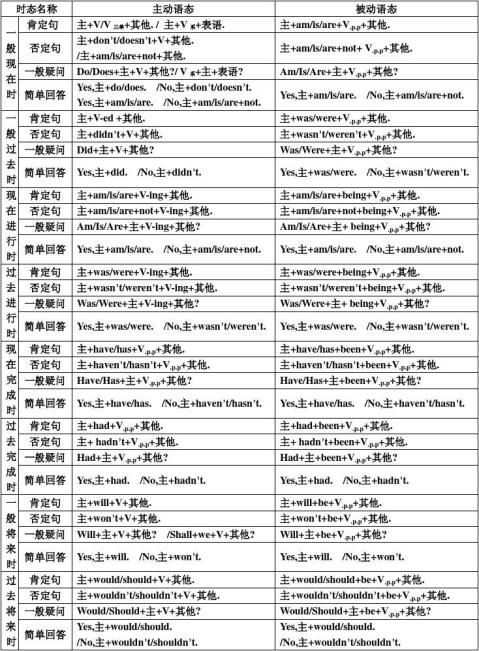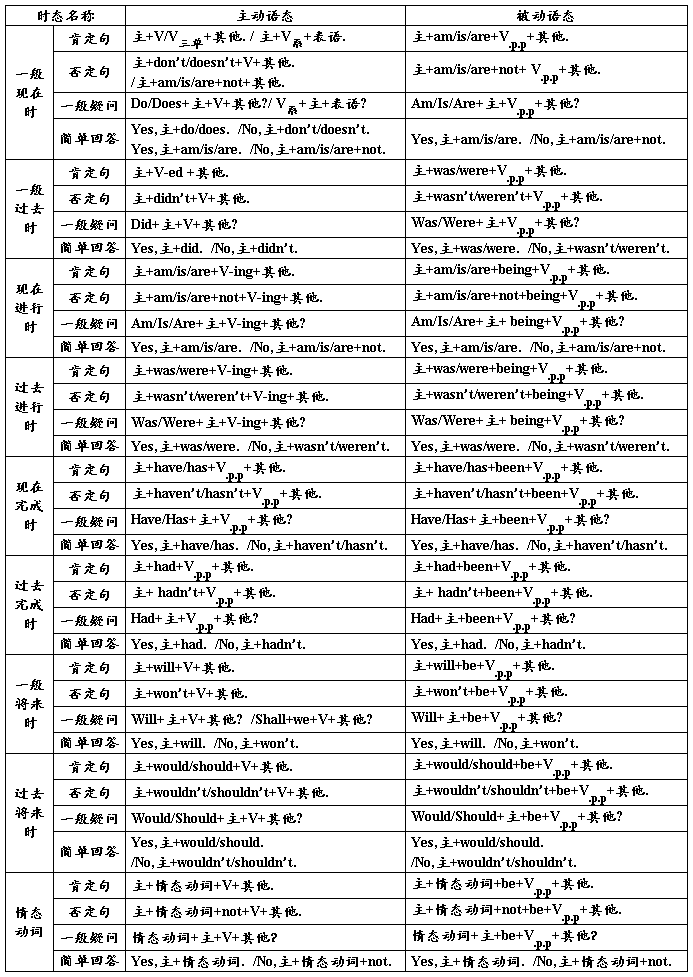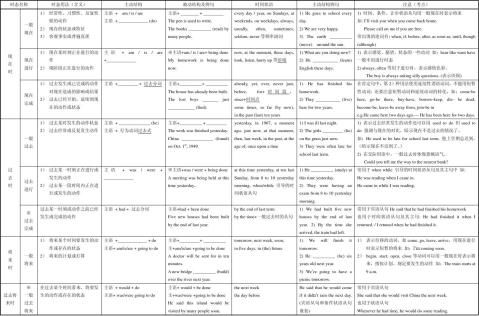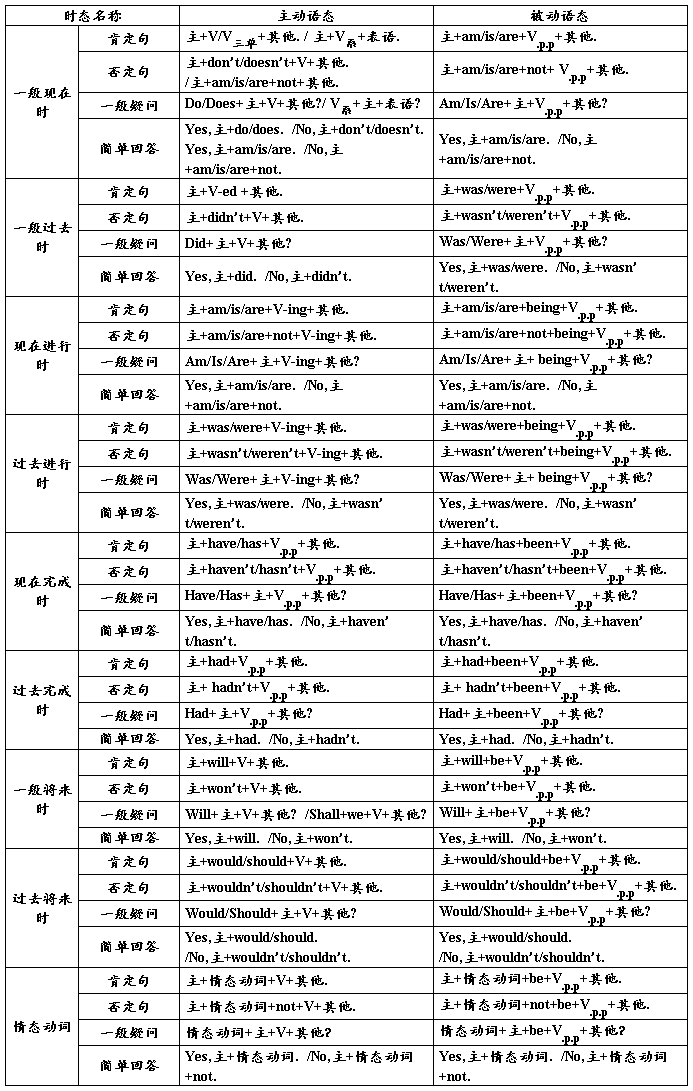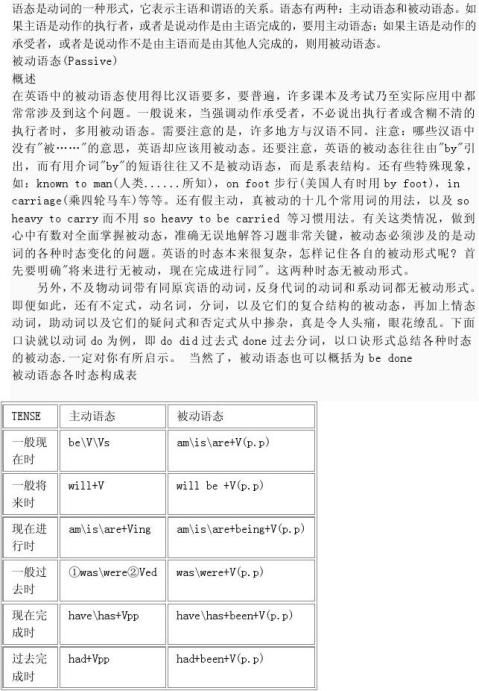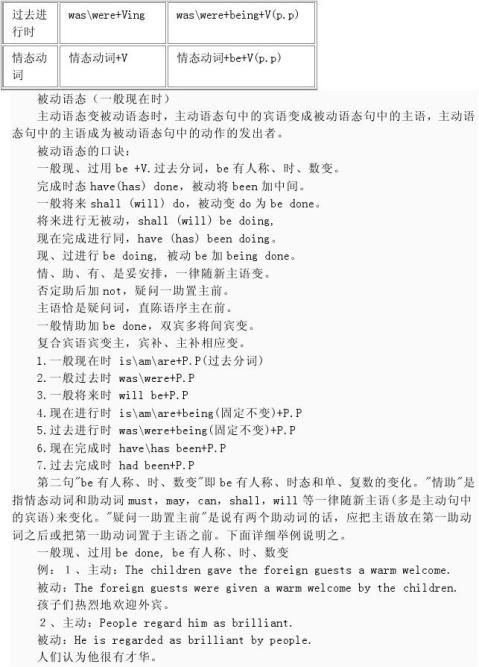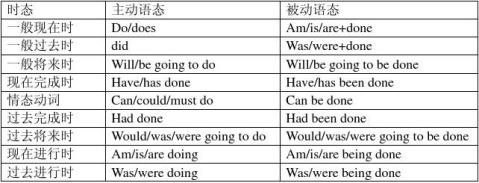2种语态
主动语态 V.
作用:主语是动作的发出者(即执行者),表示谁做什么
结构:S.+V.+O.
eg:I played football.
Calvin love Sliver.
被动语态 be+V.(pp.)
作用:主语是动作的接受者(即承受者),表示谁/什么被怎样
强调动作的承受者
不知道或没有必要说明动作的执行者
结构:一般现在时am/are/is+V.(pp.)
一般过去时was/were+V.(pp.)
一般将来时am/are/is going to be+V.(pp.) will be+V.(pp.)
现在进行时am/are/is being+V.(pp.)
过去进行时was/were being+V.(pp.)
现在完成时have/has been+V.(pp.)
过去完成时had been+V.(pp.)
含情态动词情态动词+be+V.(pp.)
eg:Are you often taken to the park by your mother?
Football was played by me.
Were any invitations sent to the parents by them last week?
The inventor is going to be invited to their school by them.
A meeting will be had by me.
Football is being played by usx.
Trees were being planted by us.
She has been helped with the problem by Tom.
The house had been built by Mr Lee.
This can’t be done in a short time.
…… …… 余下全文

